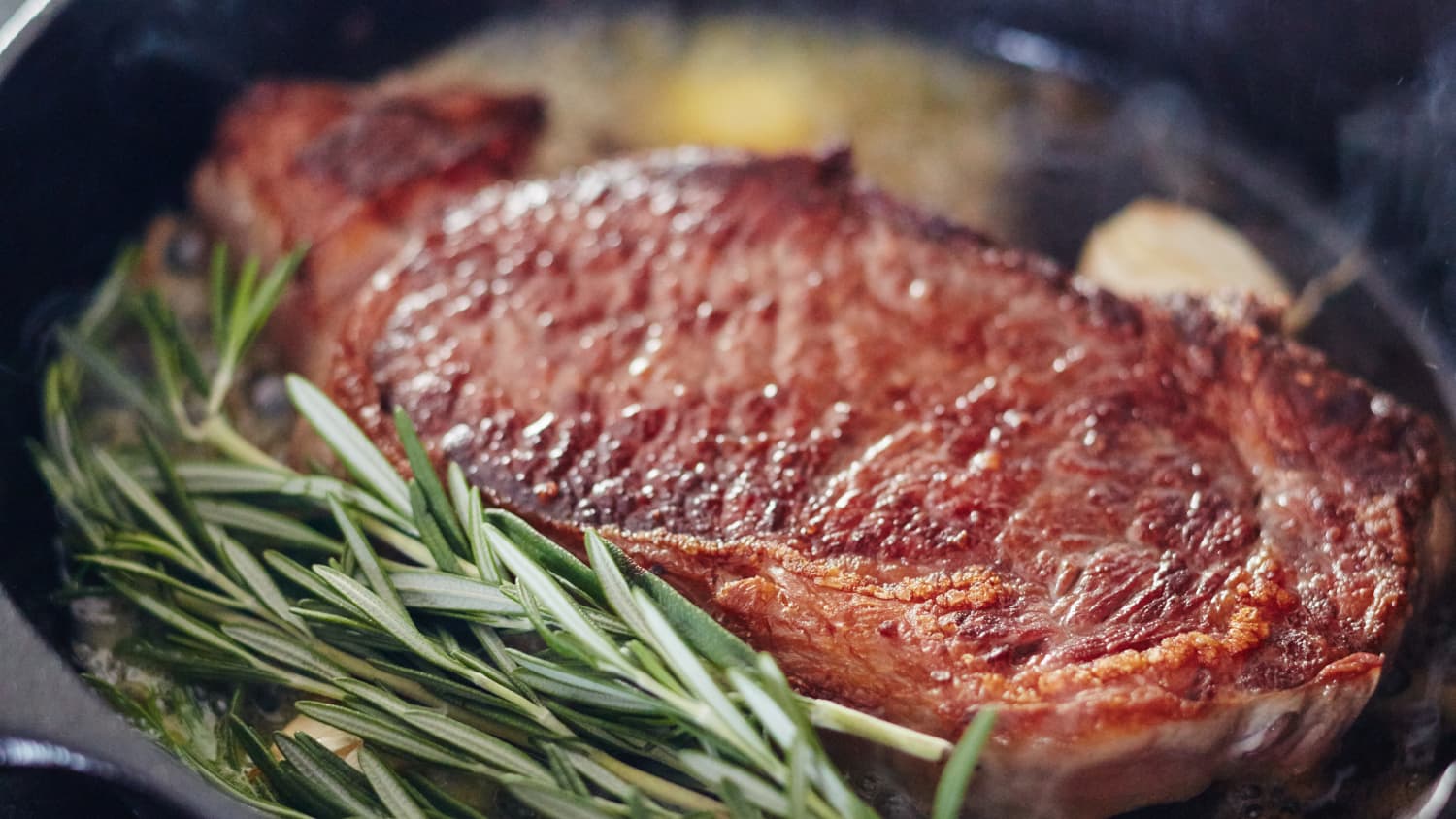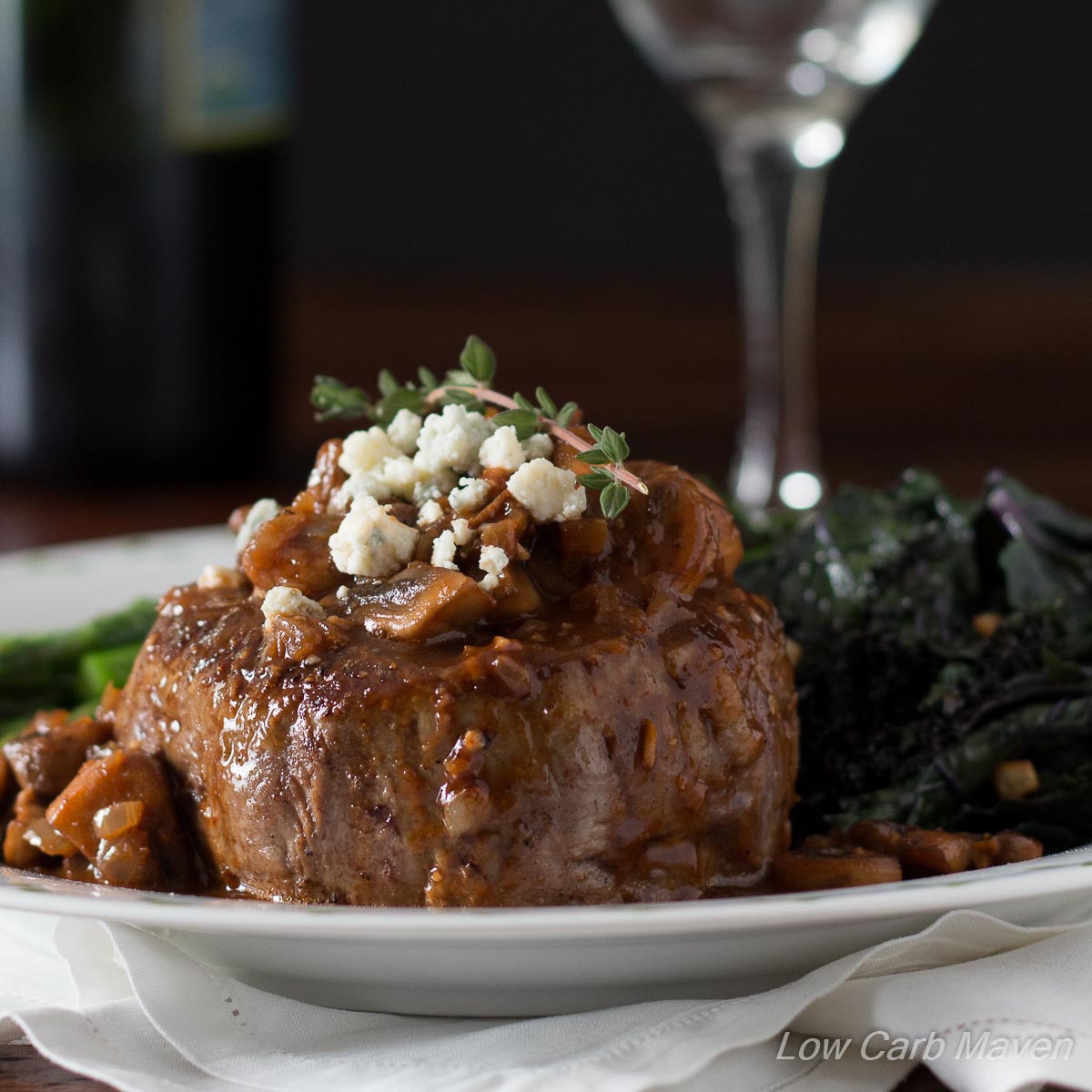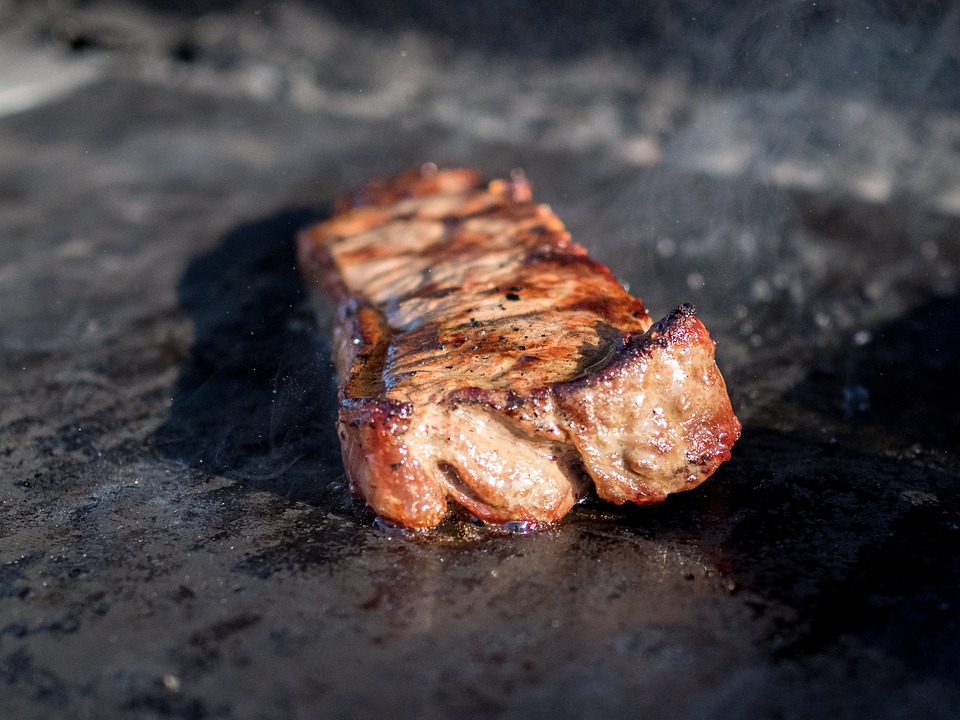
It's possible that you are wondering how to tell when a steak is done correctly and whether or not it should be cut. This can be done with a metal cake tester. Put the skewer in place of the meat. Wait for five seconds. If the meat remains cold it means that it's still raw. A warm skewer, whether it's lukewarm (or warm), will indicate medium-rare. Hot kebabs skewers are considered well-done.
To touch your steak to determine if it's done, the first step is to touch it. Place your palm flat and make an OK sign. Place your forefinger in contact with the meat. If the meat feels soft, it's probably raw. If the meat feels like a soft pad it's probably medium-rare. You can also test the meat by gently pressing your middle finger on the top. Next, touch your thumb to your middle finger.

Next, feel the meat with your hands. Medium-rare steaks should feel tender to the touch, while well-done steaks should feel firm. To determine if the steak is cooked, make a fist using your thumb and forefinger to check. If the meat has been properly cooked, the fleshy region between your thumb and forefinger will become firm. Third, close your fist. A well-done steak is firm, but not too soft.
The next step is to use your hands to check the steak. A steak is perfect when its inside is cooked to a medium-rare temperature. A medium-rare steak is one that is cooked to 150 degrees F. You can test the internal temperature of your steak by placing the tip of your ring finger against the inside of the meat. You can do this by placing a piece of newspaper on top of your steak and pressing it against the grain.
The third step involves using a meat thermometer. This method is the most reliable and it is especially useful for hard steaks. A meat thermometer should show no tension and be firm. A well-done steak will have a deep red color. You can also use it to find out how rare a steak is, depending on your taste. To determine if beef is cooked, you can use the tips below.

The lowest internal temperature of a steak is 120 degrees Fahrenheit. The temperature at which the steak is cooked is 120 degrees Fahrenheit. Gray-brown steaks will have charred blackening and be well-done. It's safe to consume if it is cooked at this temperature. People who prefer medium rare cuts should be careful with how they're cooked.
FAQ
How Long Does It Take to Be a Chef? What's the average career path for a chef?
It takes five years to become a chef. This time you'll learn the basics of cooking and work as a cook assistant. After you've completed your training you can apply to be a line cook or sous chef. The salary range for a chef is between $25,000 to $60,000 per annum.
What are the health benefits of slow cooking?
Slow cookers can be very helpful because you can prepare delicious meals quickly. Slow cooker recipes are more healthy than traditional dishes because they use less oil. Slow cooker recipes are also convenient as they can take care of themselves while your sleep.
What is the best career path for someone who wants to be a chef? How do I get started as a chef?
An apprenticeship is a good way to start your career as a chef. Apprenticeships give you the opportunity to work for many years without having to pay tuition fees. After you complete your apprenticeship, it is possible to apply for a job as a sous-chef. Sous chefs oversee cooks and help them make salads and desserts. They also supervise the operation of the restaurant.
How can I get hired to be a chef?
First, you need to earn a culinary arts diploma in order to get a job working as a chef. Next, you should join a professional association such as the American Culinary Federation (ACF). This association offers certification exams as well as networking opportunities.
Statistics
- On average, chefs earn $58,740 a year, according to the BLS. - learnhowtobecome.org
- The median pay for a chef or head cook is $53,380 per year or $25.66/hour, according to the U.S. Bureau of Labor Statistics (BLS). (learnhowtobecome.org)
- In the United States, the category is estimated at $23.2 billion annually and is growing faster than the market. (washingtonpost.com)
External Links
How To
How to make the perfect omelet
Omelets is one of my favourite breakfast foods. How do you make them perfect? I have tried many different recipes and methods, but none of them work. Today, I'd like to share some tips with you in order to make delicious and fluffy omelets every day.
Before we start making omelets, let's remember that eggs are temperamental. You must get them fresh, organically, and keep them cold until you cook. If you don't keep them cold enough, the whites won't form properly, and the yolks will break down too much and become runny. This causes your omelets to look oddly colored. If you're going to cook them immediately, it is best if the eggs are still warm.
Another tip is to separate the egg before adding it to the pan. Because this could cause your omelet to become curdled, you don't want any yolk to be mixed with any white.
You might burn the bottom of the egg if you place the egg directly on the stovetop. This could ruin the texture of your omelet. Instead, put the egg in the microwave for 10 seconds before putting it into the pan. The microwave heat cooks your egg just right, without it becoming too soft.
Let's now talk about mixing eggs. When you mix eggs together, you want to beat them well. Turn the bowl upside down and grab the whisk to do this. Next, shake the bowl vigorously. This will whip the air around the bowl and mix the egg well.
Now it's time to have fun: pour the milk into the mixture. Pour half the milk into the beaten egg mixture and then fold in the eggs. Do not worry if you see streaks of egg; they will disappear when the omelet is flipped.
After folding the eggs fold the pan onto medium heat. When the oil starts to hot, wait for the pan to cook. Once the oil has gotten hot, add 1/4 cup of butter and swirl it around so that the entire pan is coated. The lid should be carefully opened. Sprinkle salt in the pan. Salt will prevent the omelet sticking to the pan.
Cover the pan once you have formed the omelet. Wait for the top to set. Flip the omelet with a spatula, or flip it upside down. Cook the other half for another minute. Take out the omelet and place it in a bowl.
This recipe is best made with whole milk. However, it can also be used with skimmed milk.